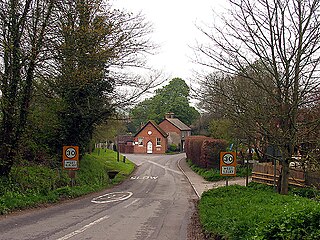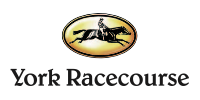Storm Bird was a Canadian-bred, Irish-trained Thoroughbred racehorse and sire. He was the outstanding European two-year-old of 1980, when he was unbeaten in five races, including the Anglesey Stakes, National Stakes, and Dewhurst Stakes. His subsequent career was disrupted by injury and illness, and he was well beaten in his only race of 1981. He was then retired to stud, where he became a successful breeding stallion.
Tap On Wood was an Irish-bred British-trained Thoroughbred racehorse and sire best known for winning the classic 2000 Guineas in 1979. As a two-year-old in 1978 he won seven of his thirteen races including the National Stakes. In the following spring he defeated the outstanding miler Kris to record an upset victory in the Guineas. His later career was disrupted by illness and he appeared in only two more races, finishing unplaced in the Derby and winning the Kiveton Park Stakes. He subsequently had some success as a breeding stallion in Europe and Japan.
Top Ville was an Irish-bred, French-trained Thoroughbred racehorse and sire. In the autumn of 1978, the colt established himself as one of the leading two-year-old colts in France with wins in the Prix Saint-Roman, Prix de Conde. In the following year, he took his winning run to six with victories in the Prix de Guiche, Prix Lupin and Prix du Jockey Club, beating top-class opponents including Irish River and Le Marmot. He was beaten in his two remaining races and was retired to stud, where he became a successful and influential breeding stallion.
Bellypha was an Irish-bred, French-trained Thoroughbred racehorse and sire. Despite never winning a Group One race, Bellypha was one of the highest-rated racehorses of his generation in Europe at both two and three years of age. In eleven racecourse appearances, Bellypha won six races including the Prix Thomas Bryon, Prix de La Jonchere, Prix Daphnis and Prix Quincey, but produced his best effort in defeat when narrowly beaten by Irish River in the Prix Jacques le Marois. He later became a successful breeding stallion in France and Japan.
Roland Gardens was a British Thoroughbred racehorse and sire best known for winning the classic 2000 Guineas in 1978. During a racing career which lasted from 1977 until 1979 he ran sixteen times and won four races. As a two-year-old he showed moderate form in his first three races before being disqualified after passing the post first in the Horris Hill Stakes. In the following spring he won the Blue Riband Trial Stakes before recording a 28/1 upset victory in the 2000 Guineas. He was beaten in his remaining five races that year and won once in four starts as a four-year-old. He later stood as a breeding stallion in South Africa where he had some success as a sire of winners.
Jaazeiro was an American-bred Thoroughbred racehorse and sire. Bred in Kentucky, he was trained in France as two-year-old and established himself as a top-class racehorse by winning the Prix des Chenes and finishing a close fourth in the Grand Criterium. He was based in Ireland in 1978, when he proved himself one of the best milers in Europe, winning the Irish 2000 Guineas, St James's Palace Stakes and Sussex Stakes. He was retired to stud after a defeat in the Waterford Crystal Mile but had little success as a breeding stallion. He died in Spain in 1986 at the age of eleven.
Double Form was an Irish-bred British Thoroughbred racehorse and sire. A specialist sprinter, he showed promise as a two-year-old in 1977, and improved to become a high-class performer in 1978. He won only one race as a three-year-old but was placed in several major sprints. In 1979 he improved again to become the highest-rated sprinter in the United Kingdom, winning the Temple Stakes, King's Stand Stakes and Haydock Sprint Cup in England and the Prix de l'Abbaye in France. He was the first horse to win both the King's Stand Stakes and the Prix de l'Abbaye. He was retired to stud where he was an immediate success but died in 1983.
Super Concorde was an American-bred French-trained Thoroughbred racehorse and sire. He was the highest-rated two-year-old in France in 1977 when he won Prix de Cabourg and Prix Morny over sprint distances before defeating a strong field in France's premier race for juveniles, the Grand Criterium. He was disappointing in three runs in 1978 and was retired to stud after having won four of his eight races.
Cloonlara was an American-bred, Irish-trained Thoroughbred racehorse and broodmare. Although she never contested a Group One race as a two-year-old, Cloonlara was regarded as the best juvenile filly to race in Europe in 1976. She won all three of her races that year by wide margins, culminating in a six length win over colts in the Phoenix Stakes. She missed the rest of the season through injury and failed to reproduce her best form in 1977, when she became increasingly temperamental. Cloonlara made a highly-promising start to her breeding career before dying at the age of seven in 1981.
Pharly was a French Thoroughbred racehorse and sire. He won five of his thirteen races, finished second five times and third once and was rated among the best colts of his generation in France at two and three years of age. As a two-year-old, he won one minor race in his first four starts but then defeated an all-aged field to win the Group One Prix de la Foret. In the following year he added major victories in the Prix Lupin, Prix du Rond Point and Prix du Moulin and finished second in the Poule d'Essai des Pouliches, Prix d'Ispahan and Prix de la Foret. After his retirement from racing he had some success as a breeding stallion in both France and England. He died in 2002 at the age of twenty-eight.
Gentilhombre was a British Thoroughbred racehorse and sire. As a two-year-old he won four races and finished third in the Group Two Laurent Perrier Champagne Stakes. In the following year he was mainly campaigned at sprint distances and established himself as one of the fastest three-year-olds in Europe with wins in the Cork and Orrery Stakes and Prix de l'Abbaye. He was even better as a four-year-old, when he was rated the best sprinter in Europe after winning the July Cup, the Diadem Stakes and a second Prix de l'Abbaye. After two unsuccessful runs in 1978 he was retired from racing having won nine of his twenty-four races. He stood as a breeding stallion in Europe and Japan but had limited success as a sire of winners.
Manado was an Irish-bred, French-trained Thoroughbred racehorse and sire. In a racing career which lasted from August 1975 until October 1976 he won three of his twelve races. He was rated the best horse of his generation in Europe in 1975 when he won the Prix Yacowlef by eight lengths before defeating strong opposition in both the Prix de la Salamandre and Grand Criterium. In 1976 he failed to win in eight starts but ran well in several major races. He was retired at the end of the season and stood as a breeding stallion in Ireland and Japan, but made little impact as a sire of winners.
Shangamuzo was a British Thoroughbred racehorse and sire best known for winning the Ascot Gold Cup in 1978. A specialist stayer, he won eight of his thirty-four races, finished second nine times and third on five occasions.
Hittite Glory was a British Thoroughbred racehorse and sire, best known for his 100/1 success in the 1975 Flying Childers Stakes. As a two-year-old, he won one of his first four races before recording his upset win in the Flying Childers and then won a second major prize when taking the Middle Park Stakes. He was rated the second best colt of his generation in Britain. In the following year he was trained in France but failed to win in six races. In all, he won three of his thirteen races between June 1975 and September 1976. He stood as a breeding stallion in Europe and Japan but has not a success.
Lianga was an American-bred, French-trained Thoroughbred racehorse and broodmare. Equally adept as a sprinter or as a miler, she won eleven of her twenty-one contests in a racing career which lasted from May 1973 until November 1975. She won her first four races as a two-year-old including the Prix du Bois and the Prix Robert Papin. In the following year she won the Prix Imprudence and Prix Maurice de Gheest. Lianga reached her peak as a four-year-old in 1975 when she recorded victories in the July Cup, Prix Jacques le Marois, Prix de l'Abbaye and Vernons Sprint Cup and was rated the best older female racehorse in Europe by Timeform, ahead of Allez France and Dahlia. After her retirement from racing she became an influential broodmare whose female-line descendants have included Danehill Dancer and Street Sense.
North Stoke was an Irish-bred, British-trained Thoroughbred racehorse and sire. He showed promise when winning two of his three races as a two-year-old in 1976. In the following year he was campaigned internationally and made consistent improvement to emerge as one of the leading middle-distance colts of the year with six consecutive victories. After two wins in handicap races in England he took the Grand Prix de Bruxelles in Belgium, the Land of Burns Stakes in Scotland, the Fürstenberg-Rennen in Germany and the Joe McGrath Memorial Stakes in Ireland. Despite a defeat in the Champion Stakes he was rated the best British-trained colt of his generation by Timeform. North Stoke had little opportunity to make his mark as a breeding stallion, dying after one season at stud.
Formidable was an American-bred, British-trained Thoroughbred racehorse and sire. He showed his best form as a two-year-old when he won five consecutive races in little over a month, including the Mill Reef Stakes and the Middle Park Stakes. At the end of the year he was regarded as the best juvenile in Britain over a distance of six furlongs. In the following year he was campaigned over one mile and failed to win, although he was placed in the St James's Palace Stakes, the Sussex Stakes and the Waterford Crystal Mile. As a four-year-old he won three minor races and finished third in the Lockinge Stakes before being retired from racing. He later became a successful breeding stallion.
Sayf El Arab was an American-bred, British-trained Thoroughbred racehorse and sire. A specialist sprinter he won four of his twenty-one races in a track career which lasted from April 1982 until August 2014. After being bought cheaply as a yearling he showed promising form as a juvenile in 1982 as he won two of his seven races. In the following year he was well beaten in his first three starts but then recorded an upset victory in the King's Stand Stakes at Royal Ascot. In 1984 he won once in seven races and finished third in his attempt to repeat his win in the King's Stand. He was retired to stud at the end of the year and had moderate success as a breeding stallion.
Smokey Lady was an Irish Thoroughbred racehorse and broodmare. Racing only as a two-year-old in 1979 she won two of her five races including the Phoenix Stakes, which was then Ireland's premier race for juveniles. She was also placed in the Queen Mary Stakes and the Prix du Petit Couvert and ended the year as Ireland's top-rated two-year-old filly. She made no impact as a broodmare.






